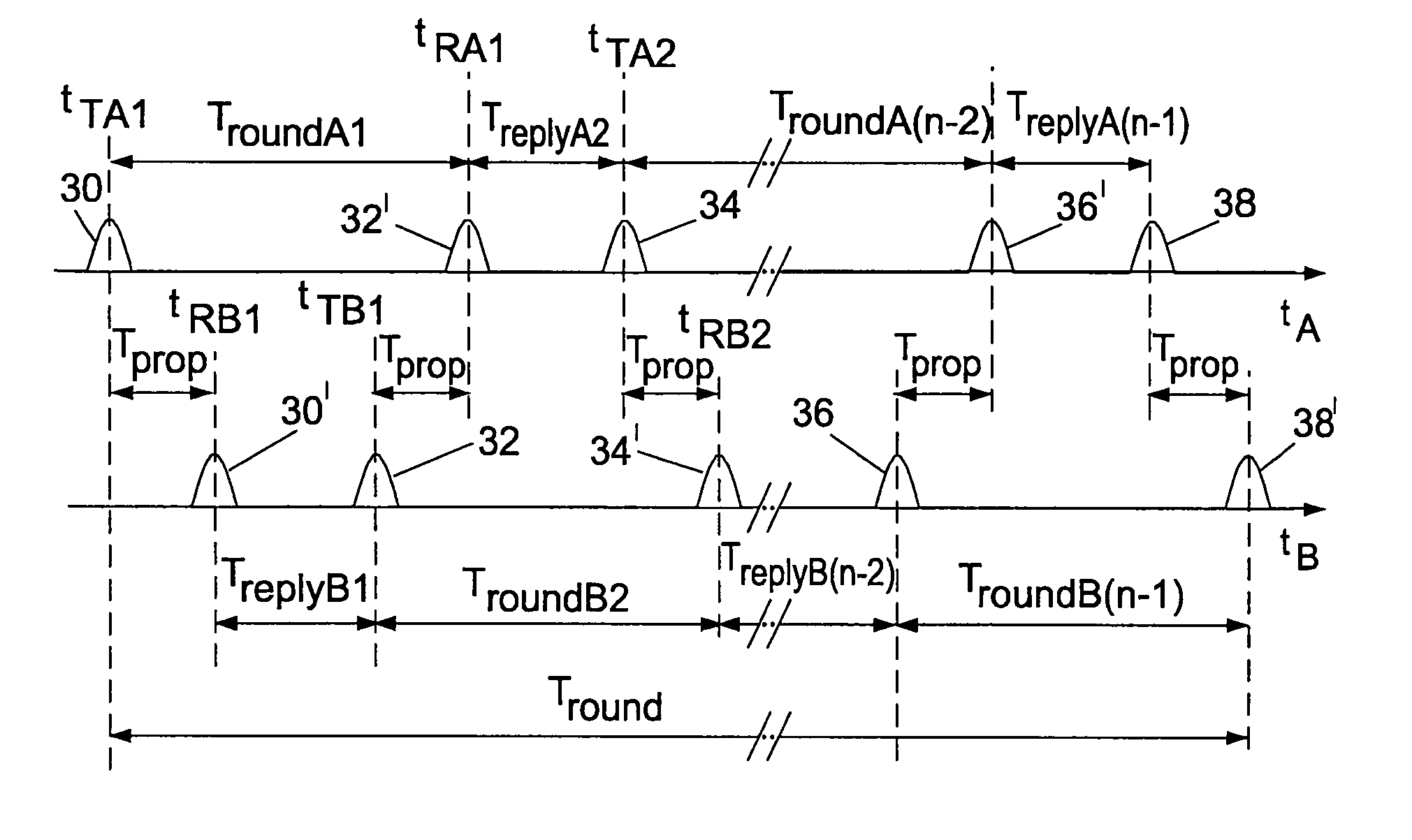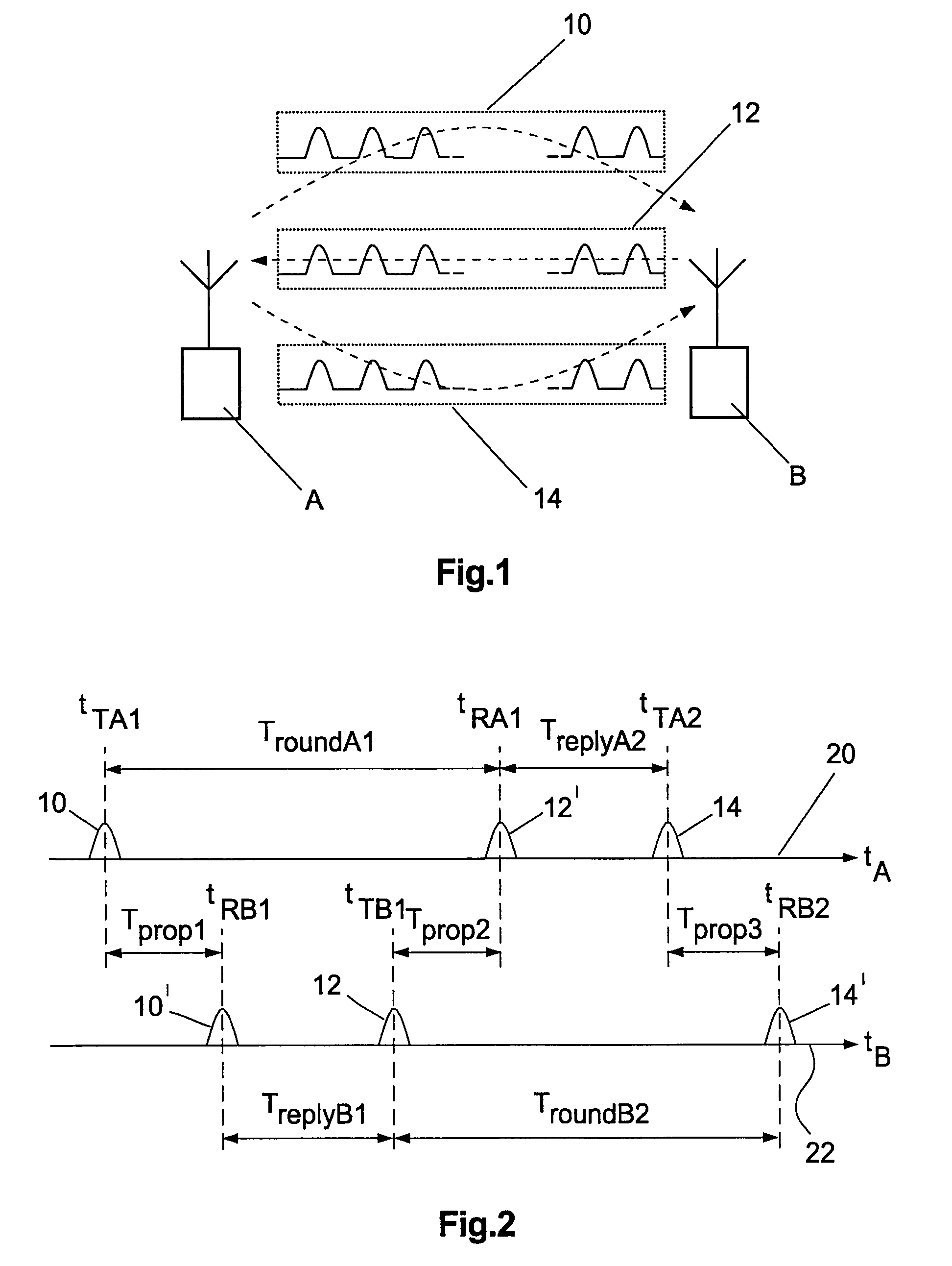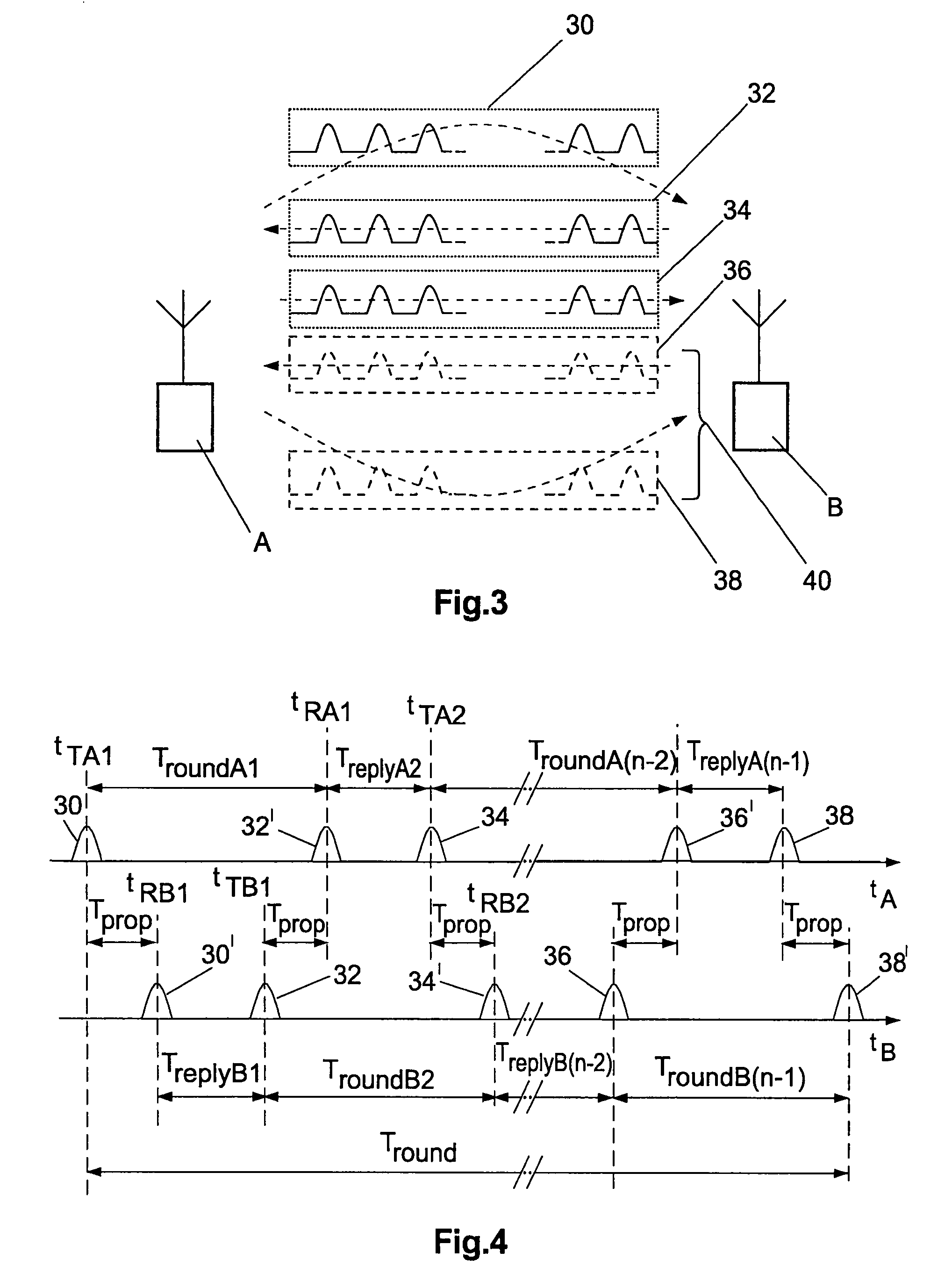Symmetrical multi-path method for determining the distance between two transmitter-receivers
a multi-path method and distance measurement technology, applied in the direction of using reradiation, radio wave reradiation/reflection, measurement devices, etc., can solve the problems of special antennae, time expenditure, inaccurate and unreliable methods for measuring distance, etc., to achieve the effect of increasing the accuracy of distance measuremen
- Summary
- Abstract
- Description
- Claims
- Application Information
AI Technical Summary
Benefits of technology
Problems solved by technology
Method used
Image
Examples
case b
[0225]In case b) the relative error is substantially dependent on the ratio of the reply time difference (TreplyA−TreplyB) to the fourfold pulse transit time (see formula 14).
[0226]EtAB=TreplyA-TreplyB4Tprop(2EtA)Formula14
[0227]At this point a substantial advantage of the procedure according to the invention becomes evident: because of the adherence according to the invention to very small reply time differences, the precision of the distance measurement is improved. The precision of the distance measurement in the case of identical reply time intervals is not dependent on the absolute round and reply time intervals. An ideal case of identical time intervals is sufficiently enough approximated by adhering to a maximum difference between the reply time intervals of a maximum of 20 microseconds. Whereas the upper limit of 20 microseconds represents the currently preferred embodiment example, it should be pointed out that a distance measurement sufficiently accurate for many cases...
first embodiment
[0382]In a first embodiment variant of a transmitter-receiver according to the invention illustrated in FIG. 14 several modules are combined in an integrated circuit device 100, also abbreviated to device, and implemented as an integrated circuit. An external CALC / APP module 102 is connected to the integrated device 100 via logical terminals Treply′, Tround′ and CTRL / DATA 104, 106 and 108. The logical terminals may be combined in a joint serial or parallel user interface.
[0383]An analogue transmitter 110 (TX) modulates the signal pulses to be transmitted to a carrier frequency and passes them amplified to an external antenna 112. An analogue receiver 114 performs amplification, demodulation and detection of radio pulses irradiated on to the antenna 112.
[0384]A baseband / MAC module 116 (MAC=medium access controller) performs coding of data frames to be transmitted and decoding of received data frames consisting of a sequence of radio signal pulses.
[0385]The baseband / MAC module 116 als...
second embodiment
[0394]In turn applications of wireless data transmission and distance measurement can additionally be integrated in the APP module 126. In the present second embodiment variant too the logical terminals d′124 and CTRL / DATA 108 can be combined in a joint serial or parallel user interface.
14.3 Integrated Distance Calculation and Application Module
[0395]FIG. 16 shows a further embodiment example of a transmitter-receiver which is distinguished by an integrated distance calculation and application module. The following illustration concentrates on differences in the transmitter-receiver of FIG. 16 compared with that of FIGS. 14 and 15. The same reference symbols are used for modules of equal functional value to the embodiment examples of FIGS. 14 and 15.
[0396]In the embodiment variant of FIG. 16 the CALC / APP module 102 (FIG. 14) is implemented in a device as an integrated circuit 130 in addition to the baseband / MAC module 120, the analogue transmitter 110 and the analogue receiver 114.
[...
PUM
 Login to View More
Login to View More Abstract
Description
Claims
Application Information
 Login to View More
Login to View More - R&D
- Intellectual Property
- Life Sciences
- Materials
- Tech Scout
- Unparalleled Data Quality
- Higher Quality Content
- 60% Fewer Hallucinations
Browse by: Latest US Patents, China's latest patents, Technical Efficacy Thesaurus, Application Domain, Technology Topic, Popular Technical Reports.
© 2025 PatSnap. All rights reserved.Legal|Privacy policy|Modern Slavery Act Transparency Statement|Sitemap|About US| Contact US: help@patsnap.com



